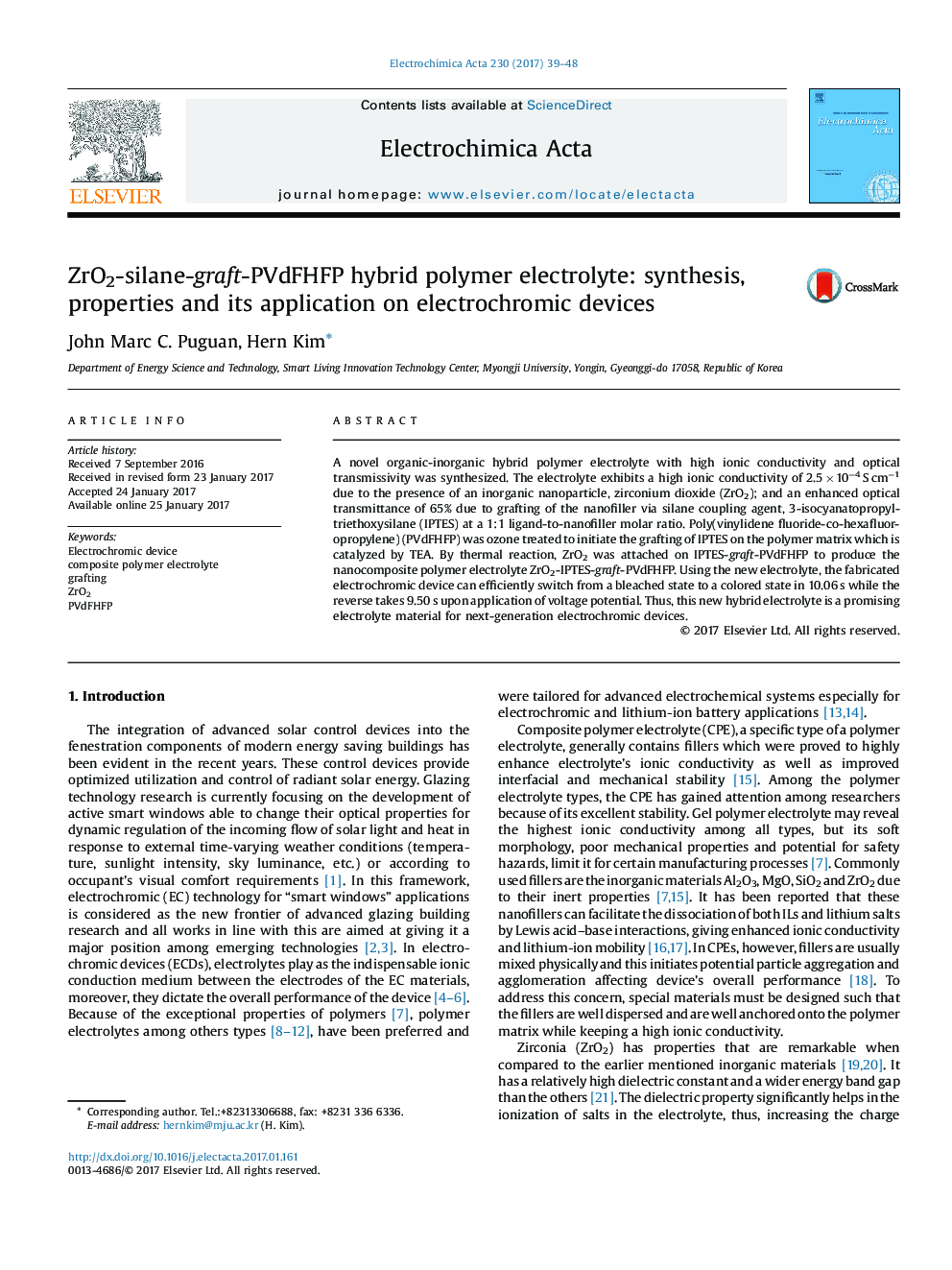| Article ID | Journal | Published Year | Pages | File Type |
|---|---|---|---|---|
| 6471357 | Electrochimica Acta | 2017 | 10 Pages |
â¢Successful synthesis of a novel ZrO2-IPTES-graft-PVdFHFP polymer electrolyte.â¢Electrolyte exhibits a good balance of ionic conductivity and optical transmittance.â¢Fabricated ECD can efficiently switch reversibly from bleached to colored state.
A novel organic-inorganic hybrid polymer electrolyte with high ionic conductivity and optical transmissivity was synthesized. The electrolyte exhibits a high ionic conductivity of 2.5Â ÃÂ 10â4Â SÂ cmâ1 due to the presence of an inorganic nanoparticle, zirconium dioxide (ZrO2); and an enhanced optical transmittance of 65% due to grafting of the nanofiller via silane coupling agent, 3-isocyanatopropyltriethoxysilane (IPTES) at a 1:1 ligand-to-nanofiller molar ratio. Poly(vinylidene fluoride-co-hexafluoropropylene) (PVdFHFP) was ozone treated to initiate the grafting of IPTES on the polymer matrix which is catalyzed by TEA. By thermal reaction, ZrO2 was attached on IPTES-graft-PVdFHFP to produce the nanocomposite polymer electrolyte ZrO2-IPTES-graft-PVdFHFP. Using the new electrolyte, the fabricated electrochromic device can efficiently switch from a bleached state to a colored state in 10.06Â s while the reverse takes 9.50Â s upon application of voltage potential. Thus, this new hybrid electrolyte is a promising electrolyte material for next-generation electrochromic devices.
